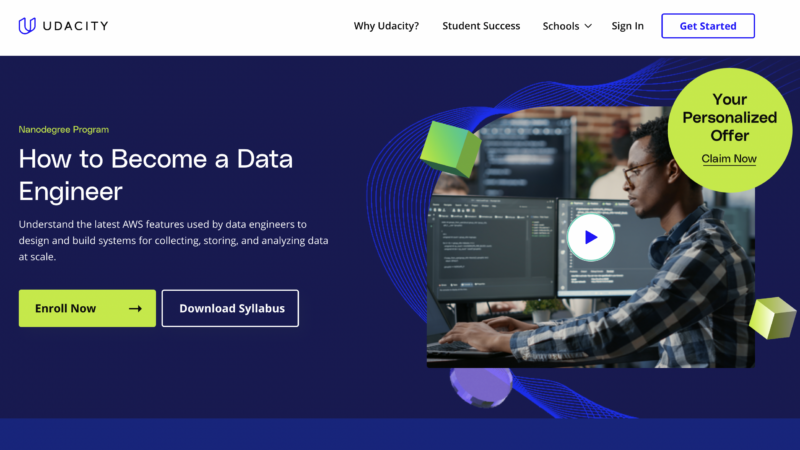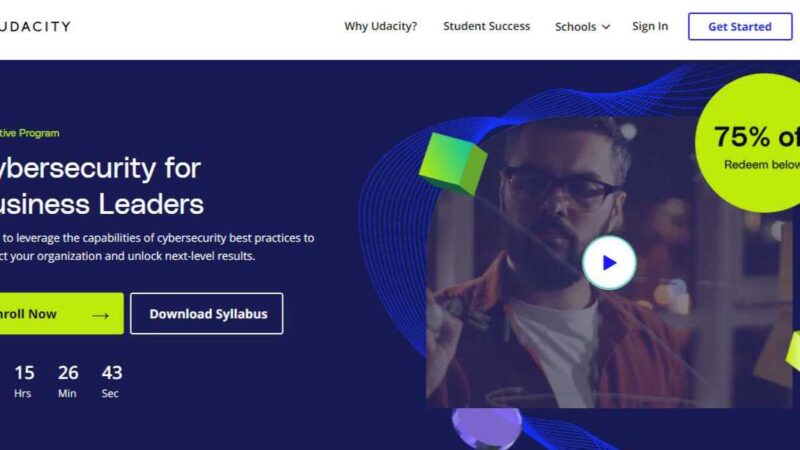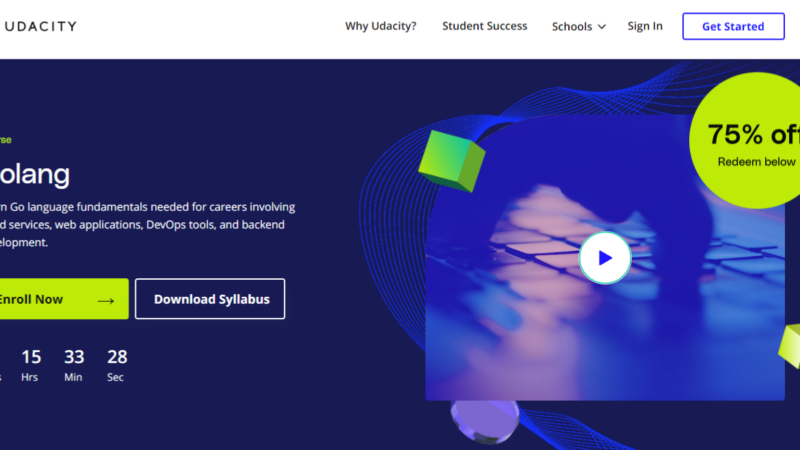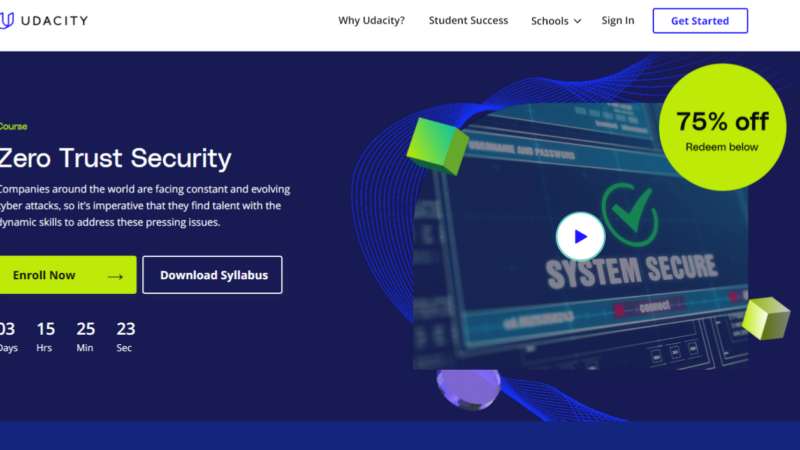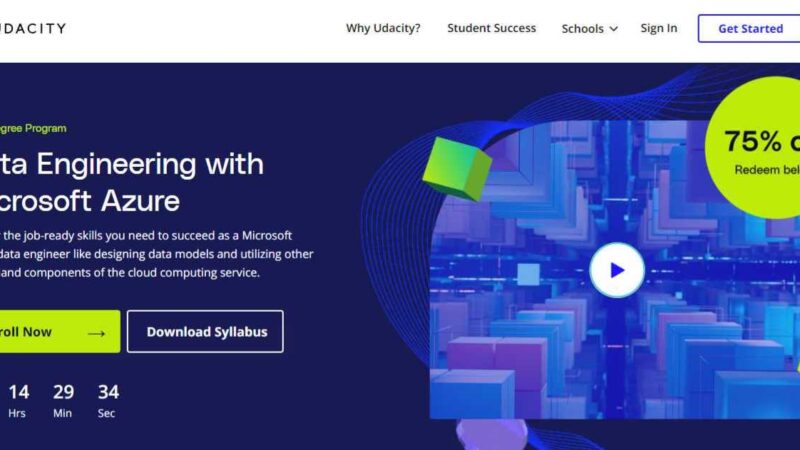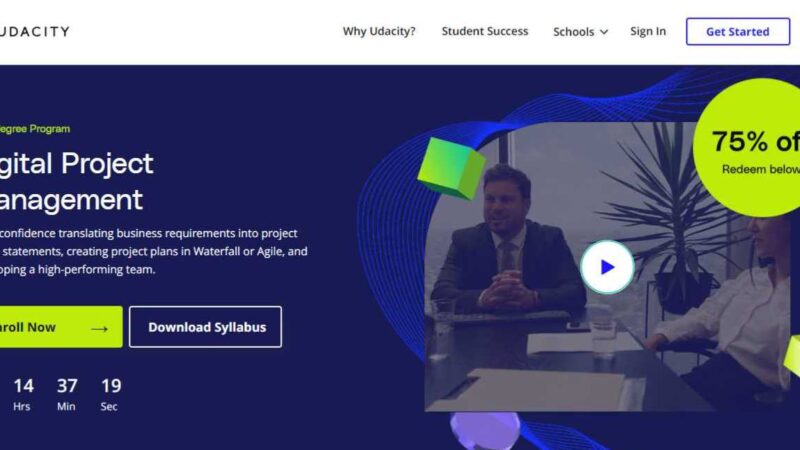Udacity Deep Reinforcement Learning Nanodegree Review

The world of AI and technology is a fascinating one, blurring the lines between machine and human. As more complex algorithms are written and linked together, deep learning methods are advancing, opening the doors to some pretty amazing things. This type of technology is everywhere, with the market growing year after year. Deeply complex automated systems that work through influence of one another opens up the doors wide to the technology of tomorrow, which is quite possibly beyond our wildest dreams.
A career as a Deep Reinforcement Learning expert comes with some pretty sweet deals, leaving you with the opportunity to work on complex algorithms that can power things like robots and advanced automated systems. You will dive in deep to the very core of machine learning, seeing how algorithms work in unison, building up to one common goal. A course with this type of knowledge needs to be one that goes in depth without leaving learners behind with all the advanced lingo. On top of that, it should be with an academy that has a name, one that can help land you your first job. You can get all of this and more with the nanodegree certification program, which we have broken down in further detail below.
What is Udacity?
This academy came from the minds of two Stanford University professors with the goal of opening up topics of computer science to any and everyone willing to learn. What began as free introductory courses via instructor led videos, turned out to be an online academy that is full of both surface and in-depth concepts in the field. Now, learners have the chance to go for a nanodegree, one that could land them entry-level jobs with top tier companies. The academy not only evolved the methods of educating but, teamed up with some of the biggest names in the field to create courses and hands-on projects.
Each nanodegree program is set to take less than a year to complete, some only taking a few months, and equip learners with what they need to enter the workforce competitively. Each nanodegree from Udacity is guaranteed to come with:
Flexibility
Online learning generally means that there is no need to stick to a particular schedule. The freedom and flexibility to login and learn whenever and wherever you want is part of the deal, plus, you can take all the time you need to complete the course.
Real Industry Projects
In an attempt to prepare learners for immediate incorporation, companies have teamed up with the academy to offer real industry problems that inspire hands on projects which are sprinkled throughout each nanodegree.
A mentor
The mentors are an added support system to help if there are technical problems or difficulties keeping on track. They are said to be there day and night to answer questions or offer support, so you’ll never go through a course alone.
Job Placement/Prep
Before learners have their first interview, they will get the chance to have a mock interview with an expert in career services. This will be followed by feedback so that you can improve and prepare for the real thing. There is also help building both resumes and portfolios, to help create one that will capture attention of recruiters in the field.
Nanodegree Instructors
When the academy first started, the instructors were a big part of the deal. They were professors at the time, using the web to make their in-class lectures available for anxious learners all around the world. Today, the academy has worked hard to create a team of instructors with industry expertise and a passion for teaching. You will see that, across every nanodegree, are instructors that have worked with top of the line companies, now able to share their experience that they have gained throughout the years. For this nanodegree, your instructors are:
Alexis Cook
Holder of a Masters in Computer Science and Applied Mathematics, Alexis has a top tier education that helped her land a position with the National Science Foundation as a research fellow.
Arpan Chakraborty
With a PhD in Computer Science, Arpan has taken his expertise and attempted to put it in written form as coauthor of a book about the language of R. Plus, he is currently part of the academic staff at Georgia Tech as one of the instructors for the Masters Computer Sciences programs.
Mat Leonard
A unique background has led Mat to break industry molds. As a former physicist, neuroscience researcher, and data scientist, he has a well rounded and unique view on the field which learners should be honored to be a part of.
Dana Sheahan
Dana was awarded for her idea for the Automotive group Motorola. She used her knowledge as an electrical engineer in aiding her development of embedded systems, and is now sharing her expertise with learners.
Chhavi Yadav
Currently, Chhavi is a graduate student in Computer Sciences. Her work includes research of machine learning algorithims and wireless systems.
Udacity Deep Reinforcement Learning Prerequisites:
This is said to be an intermediate course which requires some previous background knowledge. Before considering taking this course, the academy recommends that learners have the following:
- Some experience with Python plus familiarity with object orientation
- Literate in code written by others
- Experience with statistical analysis with a sharp focus on probability
- Some work with machine learning
- Experience with frameworks made for deep learning like PyTorch or TensorFlow
Udacity Deep Reinforcement Learning Course:
The course is divided into sections. This one in particular comes with four, where there are lessons to complete in each one. Below, we will analyze the course from start to finish, taking a look at the types of things you’ll be learning from day one.
The Basics of Reinforcement Learning
You’re starting from the ground up, getting the tools and concepts you need to build a solid foundation. The foundation is possibly the most important thing, as you’ll need it all throughout this course and your career.
Value Based Methods
In this section you’ll start applying the knowledge you learned. Using these tools, you’ll start to see the function of architectures, learning how they work together to power functions to perform tasks. You will gain first-hand experience, able to train your own agent that makes its way through a virtual world based off of your commands.
Policy Based Methods
Here, you will be introduced to a bit of the theory behind algorithms. You’ll then design and test your very own, which will navigate a robotic arm as it makes its way to and from specific locations.
Multi Agent Reinforcement Learning
In the final section, you’ll begin to see how all of things come together. See how these reinforcements come together and interact with others, using them to develop complex commands like coordination and more. At the end, you’ll get to have some fun, attempting to train two agents’ tennis or, as an extra, to play soccer.
The Time
While you do have the flexibility and freedom to choose the amount of time you take to complete the course, the academy estimates that it will take 4 months. This estimate is based off of you dedicating 10 to 15 hours a week, something that you will ultimately have to decide. It is best to try and stick to a schedule, especially because the academy will give you due dates on some projects. Plus, the cost goes up the more time that you take, so if you’re looking to save some money and get a better deal, you’ll want to finish in as little time as possible
Udacity Deep Reinforcement Learning Cost:
You’re probably wondering what we mean by the cost being affected by the time you take. The reason for this is the way that Udacity charges for the course, which is an attempt to make it affordable for a number of users. They offer a few options to pay, both of which go by monthly access. You can choose to pay per month or pay for estimated total time of access. We will break down the total cost of each one to see which is a better deal for you and your schedule. Before we do however, there is a deal up and running on the web as we write this with the academy offering one month for free. This is available for both the monthly and bundled cost.
Per Month
The price per month of access is $359. Doing it this way, the total will just depend on how long you take. However, as you can probably tell, the longer you have access, the higher the cost, which could drive up pretty fast. You will get one month free and then have to pay for the rest of the months that you need access.
Bundle
When you take the bundle deal that comes with the Udacity recommended time attached, you’ll be paying for 4 months of access. With the free month however you’ll really be getting a total of 5 months and the price is slashed down to $206 per month. This is definitely a good deal, especially if you can keep yourself on a good solid schedule. The only difference in this price is that you’ll have to pay up front, something that could prove a bit difficult for some learners.
What Have Learners Said?
Reviews are always a good way to get a grasp on how the courses actually play out. Taking a look at what learners had to say, most of them were satisfied with the course gaining an overall rating of 4.7 out of 5. Here are a few from different ratings and what they had to say.
“It is a little tough. Alexis Cook has done a great job. Her videos are detailed and slowly build the concept and code. Other instructors have added small and quick videos. Figuring out the code takes reasonable time but overall good learning. It would be good if we got a practice of creating the environment from scratch as part of a graded project in the first of 4 modules.” (5-stars)
“1. The instructors’ videos show too much of the instructors themselves. Seeing them making handwaves does not add much. Showing more explanation would help. 2. Some instructors speak English with heavy accents. They seem to know their materials but it’s hard to understand.” (2-stars)
Deep Reinforcement Learning Job Market :
According to an analysis of the market by PayScale, those with only entry level skills are set to make over $100,000 per year. This is a title that comes with huge pay raises that push you far up the scale as your experience evolves. Skills related to AI are considered to be in high demand, especially with a focus on deep learning and reinforcement. According the TheNextWeb.com, 2020 is set to see a 2.3 million jobs created for those with this skillset, and the market estimated to grow to a whopping $8.8 billion in 2022 as opposed to the $1.4 billion in 2017. This being said, there is definitely a market, one that has possibly not yet reached its peak.
Final Thoughts
If you’re fascinated by AI and looking to break in to the inner workings as a deep learning reinforcement expert, this course could get you started in the right direction. You’ll have the skills necessary to land an entry-level job, one where you can expand your knowledge as you break further into the possibilities that come with AI and machine learning.
Udacity is a recognized academy that is backed by powerful companies in the industry. On top of that, they have a superstar lineup of instructions, most with experience in the field and beyond. On top of that, the curriculum takes you from the very basics of the foundational concepts to more complex ideals where you can start building up your skillset to tackle some of today’s most daunting issues. On top of all of this, the added discount makes that course a little lower on the price scale, making now a better time than ever to jump in and start learning.
